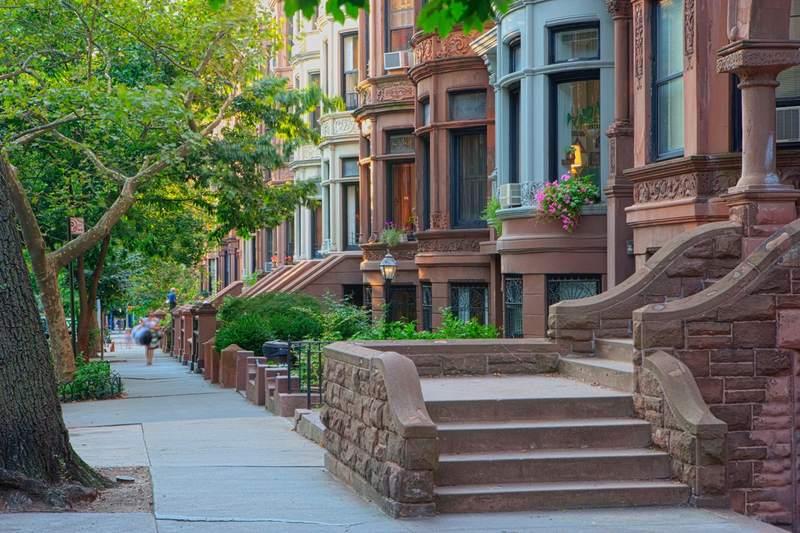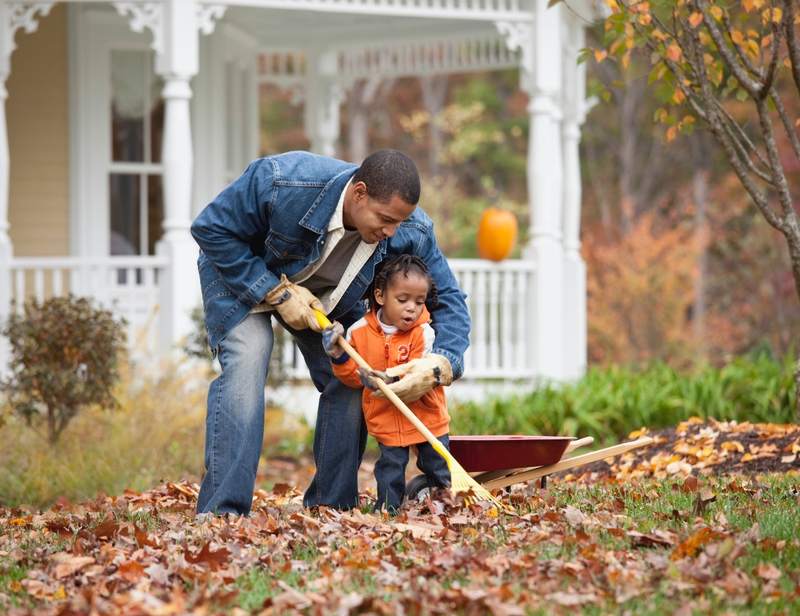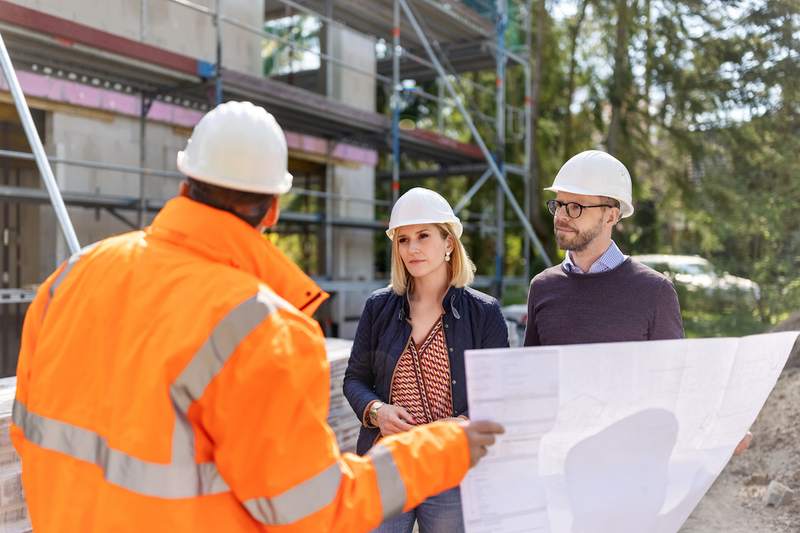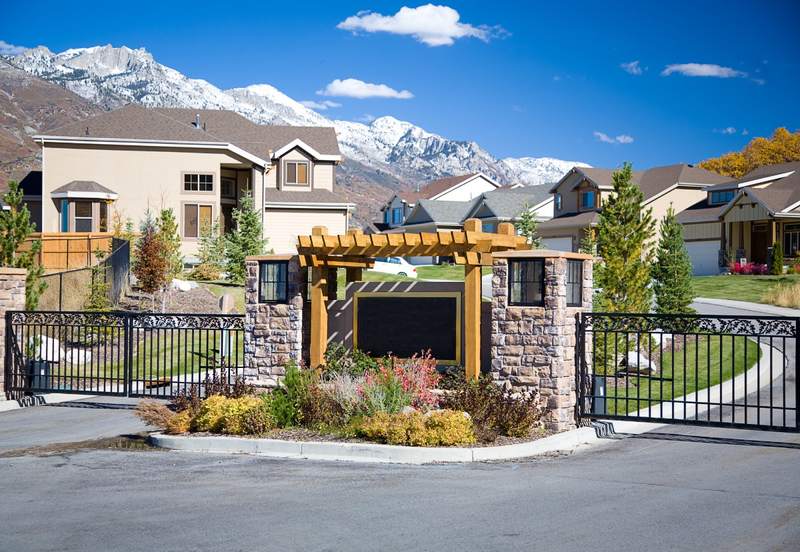
When you’re trying to decide on which type of home to buy, you might consider a brownstone. Brownstones are tall, narrow, stylish, and typically found on the East Coast in urban areas. This type of home gets its name from its unique color, and has long been a desired option for homebuyers.
Here’s a closer look at what makes a brownstone unique, and the pros and cons of buying one.
Brownstone Defined
A brownstone is a type of multistory home with a facade made of dark sandstone in a rich brown. Its signature color comes from a hematite iron ore. The stone is easy to cut, which allowed builders to create detailed and unique ornamentation that gives brownstones a look of grandeur.
Brownstones are commonly found in cities in the Northeastern United States, like New York, Boston, and Philadelphia. They often have tall ceilings, carved fireplaces, and the classic stoop that leads up to the parlor floor.
“A brownstone is a type of architectural style that originated in the 19th century and was popular throughout New York City,” says Jon Sanborn, co-founder of SD House Guys, a San Diego-based real estate company. “Brownstones are typically built of brick, with three or four stories and an interior staircase. They often feature ornate facades, wide wood front doors, tall windows, and decorative railings.”
History of brownstones
During the Triassic era, large deposits of brownstone were left beneath what is now Massachusetts, Connecticut, and New Jersey. Fast forward 251 million years, and humans began mining brownstone from quarries in the 19th century. It became a popular building material because it was cheaper than marble, limestone, and granite, and also easy to extract.
At first, brownstones were seen as poorer quality compared with homes made from other types of stone. But the arrival of Romanticism brought in a preference for buildings that looked more natural and were made from darker materials. Brownstone also became preferred because it was less flammable than other building materials.
Due to their stylish appearance, brownstone houses surged in popularity and remain in demand today. But the brownstone quarries in Portland, Connecticut — which supplied the materials that helped build New York brownstones — shut down in 2012 due to scarcity. That means new brownstones are no longer being built, and many brownstones hold historic or landmark status. This has only increased demand from homebuyers who want to live in a piece of history.
Brownstone vs. townhouse vs. row house
Brownstones, townhouses, and row houses are terms that can be easy to mix up. Townhouses are narrow homes that share at least one wall with another townhouse, and a row house is another name for a townhouse. A brownstone is a townhouse made of a specific type of sandstone.
Not all townhouses are brownstones, but all brownstones are townhouses.
Benefits of Living In a Brownstone
Living in a brownstone comes with perks. Here are some advantages of owning a brownstone.
Enduring appeal
Brownstones possess a historic beauty that has kept them popular throughout the years. Their stylish craftsmanship is often an emblem of elegant urban living.
“Brownstones are popular because they offer a unique combination of small-town charm and urban sophistication,” Sanborn says. “They feature lavish details that provide the architectural character so sought after in cities such as New York City, Philadelphia, Boston, and Baltimore.”
Strong structural quality
Another reason why brownstones have stood the test of time is because they were built by experienced craftsmen using brick and stone. As a result, they have enduring structural integrity. This also means brownstones are more resistant to fire than buildings made of other materials.
More space and good location
Brownstones tend to have high ceilings and more square footage than many apartments and condos. They also are often located in cities and walkable neighborhoods.
“Brownstones also typically come with access to amenities like nearby parks, restaurants, stores, and other attractions that add to their appeal,” Sanborn says. “Furthermore, due to their small size and close proximity to other buildings, brownstones also provide a sense of community that is often lacking in large apartment complexes.”
Drawbacks of Living In a Brownstone
Like with any type of home, brownstone living is not without some downsides. Here’s a look at some of the disadvantages.
Brownstones can be expensive
Because brownstones are so popular and spacious, they certainly aren’t cheap. Brownstones are also often located in major cities and can carry a historic or landmark designation, which contributes to their high price tag.
You’ll share at least one wall with a neighbor
While you’ll typically get some outdoor space to yourself, you’ll still share at least one wall with another home. Homebuyers who prioritize privacy may be better off purchasing a single-family home with more distance from the neighbors.
There are fake brownstones
Because brownstones are so popular, some buildings imitate the architecture of brownstones but are actually made with regular brick. Remember, authentic brownstones have a front facade made of chocolate brown sandstone.
Is a Brownstone Right for You?
If you’re ready to buy a home, you might wonder if you’d be happy living in a brownstone. For homebuyers who enjoy city life but want more space than a condo would offer, a brownstone might be a great option. Townhouses are often seen as a middle ground between condos and single-family homes, and brownstones offer the same perks with a more sophisticated look.
Brownstone FAQ
Here are the answers to some frequently asked questions about brownstones.











